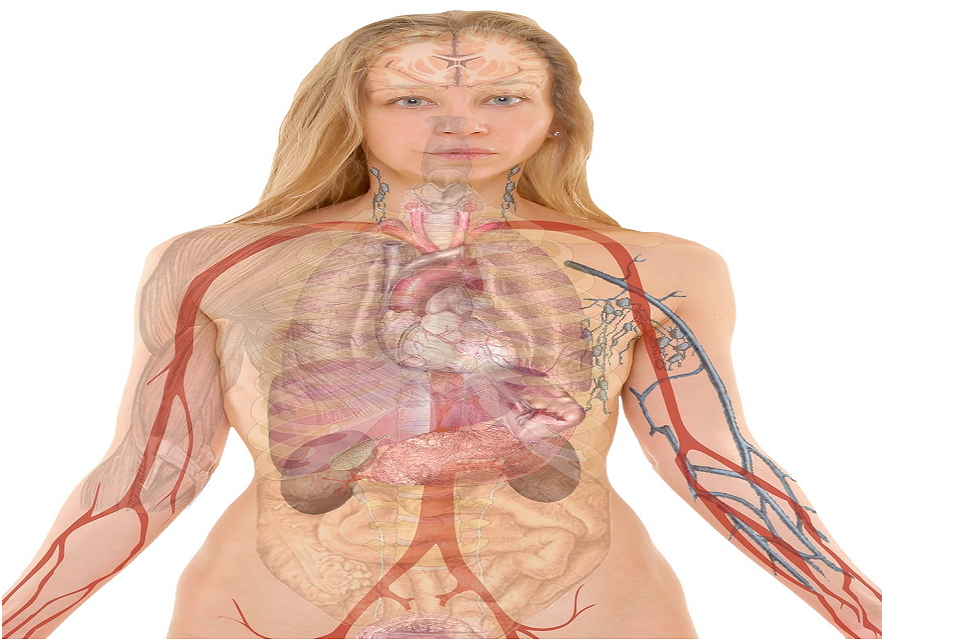Exploring Anatomy Research Topics: Techniques, Areas, Applications, and Future Implications

Introduction
Anatomy research is a field of scientific investigation that has contributed greatly to our understanding of the human body making it important to select the best Anatomy Research Topics for research papers. Through the use of various techniques and tools, anatomy researchers have been able to explore the physical structures of organisms at different levels of complexity. This has led to important discoveries and breakthroughs in areas such as surgery, prosthetics, and medical devices, which have improved human health and quality of life. In this blog post, we will explore some of the major points of anatomy research, including the importance of the field, the techniques used, current topics and applications, the future of the field, and ethical considerations. By the end of this post, you should have a deeper understanding of the significance of anatomy research and the potential impact it can have on human health.
Importance of Anatomy Research Topics:
Anatomy Research Topics is crucial towards understanding the structure and function of the human body. By investigating the complex organization of different tissues, organs, and systems, researchers can identify the underlying mechanisms that govern human health and disease. Through anatomy research, we have discovered major breakthroughs, such as the discovery of the structure of DNA, the development of organ transplantation techniques, and the creation of new prosthetic devices. These advancements have improved human health, extended life expectancy, and enhanced the quality of life for millions of people. In addition, anatomy research has led to a better understanding of the physiological basis of health and disease, which is essential for the development of new treatments and interventions.
Techniques used in Anatomy Research Topics:
Identification of Anatomy Research Topics involves a variety of techniques and tools that allow researchers to investigate the complex structures of living organisms. Dissection is a common technique used to study the gross anatomy of organs and tissues. Microscopy, including light microscopy, electron microscopy, and confocal microscopy, allows researchers to study cells and tissues at a higher resolution. Imaging techniques such as magnetic resonance imaging (MRI) and computed tomography (CT) provide detailed images of internal organs and structures. These tools are essential for identifying structural abnormalities and diagnosing diseases. Other advanced analytical methods include molecular biology techniques, such as polymerase chain reaction (PCR) and gene expression analysis, which allow researchers to investigate the molecular basis of diseases and physiological processes. The use of computational modeling and simulation has also become increasingly important in anatomy research, allowing researchers to study complex physiological processes and test hypotheses in silico. The combination of these techniques and tools has enabled researchers to explore the human body in unprecedented detail, leading to a greater understanding of the underlying mechanisms that govern human health and disease.
Areas of Anatomy Research Topics:
Anatomy research can be divided into several different areas, each of which focuses on a specific aspect of the structure and function of the human body. Gross anatomy is concerned with the study of the macroscopic structures of organs and tissues. It involves the use of dissection and imaging techniques to investigate the three-dimensional organization of different organs and tissues in the body. Histology, on the other hand, involves the study of tissues and cells at the microscopic level, using techniques such as staining and microscopy. Anatomy Research Topics mainly fall under the study of the changes that occur in the body during growth and development, from embryonic development to adulthood. Comparative anatomy compares the anatomical structures of different species, allowing researchers to gain a better understanding of the evolution of anatomical structures and the diversity of life on Earth. By studying these different areas of anatomy research, researchers can gain a deeper understanding of the structure and function of the human body, as well as the underlying physiological processes that govern human health and disease.
Current topics in anatomy research
Anatomy research is a rapidly evolving field, with new and exciting developments emerging all the time. One of the most exciting areas of research is organoid technology, which involves growing miniature organs in the laboratory from stem cells. These organoids provide researchers with a powerful tool for studying disease mechanisms and testing new drugs. Another exciting development is the 3D printing of organs, which could revolutionize the field of transplantation by allowing organs to be printed on demand. This technology is still in its early stages, but researchers are making significant progress in creating functional tissues and organs. Advancements in imaging techniques, such as super-resolution microscopy and X-ray crystallography, are also making it possible to study the human body in greater detail than ever before. These techniques are allowing researchers to visualize complex biological structures at the atomic and molecular level, providing new insights into the mechanisms that govern human health and disease. Overall, these recent developments in anatomy research hold great promise for the future of medicine and could have a significant impact on human health.
Applications of Anatomy Research Topics:
Anatomy Research Topics havehad a significant impact on human health, leading to the development of new medical technologies and treatments. One of the most important applications of anatomy research is in the development of surgical techniques. Through the study of anatomical structures and physiological processes, researchers have developed new surgical approaches that are less invasive and more precise than traditional methods. For example, minimally invasive surgery, which involves small incisions and the use of specialized instruments, has revolutionized the field of surgery and has significantly reduced patient recovery times. Another important application of anatomy research is in the development of prosthetics and medical devices. By studying the biomechanics of the human body, researchers have developed prosthetic limbs and other devices that can restore mobility and improve quality of life for people with disabilities. In addition, anatomy research has led to the development of advanced medical imaging techniques, such as MRI and CT, which are used for the early detection and diagnosis of diseases such as cancer and neurological disorders. Overall, the applications of anatomy research are vast and varied, and have the potential to significantly improve human health and well-being.
Future of anatomy research
The future of anatomy research holds great promise for advancing our understanding of the human body and improving human health. With advances in technology and new research techniques, there are many exciting areas of study on the horizon. One area that is likely to see significant progress is the study of the human microbiome, which refers to the trillions of microorganisms that live in and on the human body. Researchers are only beginning to scratch the surface of the potential applications of this research, but it is already clear that the microbiome plays a crucial role in human health, from digestion and immunity to mental health and disease. Another area of interest is the use of stem cells to regenerate damaged or diseased tissues and organs. By harnessing the regenerative potential of stem cells, researchers may be able to develop new treatments for a wide range of conditions, from heart disease to spinal cord injuries. Finally, advancements in artificial intelligence and machine learning are likely to have a significant impact on the future of anatomy research. These Anatomy Research Topicstools may help researchers to identify patterns and relationships in complex data sets, allowing for more precise diagnoses and treatments. Overall, the future of anatomy research is bright, and has the potential to transform the field of medicine and improve human health in countless ways.
Ethical considerations in anatomy research:
Anatomy research is an important field that has contributed significantly to our understanding of the human body. However, there are ethical considerations that arise in the course of conducting this research. One of the most controversial aspects of anatomy research is the use of animal models. While animal models can provide valuable insights into human physiology and disease, there are concerns about the welfare of the animals involved. Researchers must balance the potential benefits of their research with the ethical concerns surrounding animal testing. Another ethical consideration in anatomy research is the use of human cadavers. While cadavers provide a valuable resource for anatomical study, there are questions about the ethical implications of using human remains for research purposes. In some cases, families may not be fully informed about how their loved ones’ bodies will be used, and there are concerns about the respectful treatment of human remains. Researchers must be transparent and ethical in their handling of human cadavers, and ensure that they are used in a manner that is respectful and in line with the wishes of the donors and their families. Ultimately, there are many ethical considerations that arise in anatomy research, and it is important for researchers to carefully consider these issues in order to ensure that their work is conducted in an ethical and responsible manner.
50 Anatomy Research Topics
1. The Role of the Microbiome in Human Health.
2. 3D Printing of Organs for Transplantation.
3. Neural Pathways in Pain Perception.
4. Comparative Anatomy of Human and Non-Human Primates.
5. Developmental Anatomy of the Fetal Brain.
6. Gross Anatomy of the Human Musculoskeletal System.
7. The Anatomy of the Cardiovascular System and Its Disorders.
8. Histological Analysis of Cancer Tissue.
9. The Anatomy of the Human Digestive System.
10. The Anatomy of the Human Respiratory System.
11. Comparative Anatomy of Vertebrate Digestive Systems.
12. Anatomy of the Human Nervous System.
13. Histological Analysis of Brain Tissue in Neurological Disorders.
14. Comparative Anatomy of the Human and Avian Respiratory Systems.
15. Anatomy of the Human Endocrine System.
16. Developmental Anatomy of the Human Kidney.
17. The Anatomy of the Human Immune System.
18. Comparative Anatomy of the Human and Canine Musculoskeletal Systems.
19. Anatomy of the Human Reproductive System.
20. Developmental Anatomy of the Human Heart.
21. Histological Analysis of Kidney Tissue in Renal Diseases.
22. Anatomy of the Human Lymphatic System.
23. Comparative Anatomy of the Human and Bovine Digestive Systems.
24. The Anatomy of the Human Integumentary System.
25. Histological Analysis of Lung Tissue in Respiratory Diseases.
26. Anatomy of the Human Urinary System.
27. Comparative Anatomy of the Human and Equine Musculoskeletal Systems.
28. The Anatomy of the Human Skeletal System.
29. Histological Analysis of Skin Tissue in Dermatological Diseases.
30. Comparative Anatomy of the Human and Feline Respiratory Systems.
31. The Anatomy of the Human Eye.
32. Developmental Anatomy of the Human Spinal Cord.
33. Anatomy of the Human Ear.
34. Comparative Anatomy of the Human and Porcine Digestive Systems.
35. The Anatomy of the Human Mouth and Teeth.
36. Histological Analysis of Heart Tissue in Cardiac Diseases.
37. Comparative Anatomy of the Human and Ovine Musculoskeletal Systems.
38. The Anatomy of the Human Brainstem.
39. Histological Analysis of Liver Tissue in Hepatic Diseases.
40. Comparative Anatomy of the Human and Canine Respiratory Systems.
41. The Anatomy of the Human Vestibular System.
42. Developmental Anatomy of the Human Brainstem.
43. Comparative Anatomy of the Human and Bovine Respiratory Systems.
44. The Anatomy of the Human Limbic System.
45. Histological Analysis of Brainstem Tissue in Neurological Disorders.
46. Comparative Anatomy of the Human and Equine Respiratory Systems.
47. The Anatomy of the Human Basal Ganglia.
48. Histological Analysis of Intestine Tissue in Gastrointestinal Diseases.
49. Comparative Anatomy of the Human and Ovine Respiratory Systems.
50. The Anatomy of the Human Cerebellum.
Conclusion
Anatomy Research Topicsare a crucial requirement in the field that contributes significantly to our understanding of the human body. Through the use of various techniques and tools, including dissection, microscopy, and imaging, researchers have made numerous breakthroughs in different areas of anatomy, such as gross anatomy, histology, developmental anatomy, and comparative anatomy. Recent advances, such as organoid technology, 3D printing of organs, and improvements in imaging techniques, have opened up exciting possibilities for the future of anatomy research. However, ethical considerations, such as the use of animal models and human cadavers, must also be carefully considered. Ultimately, the applications of anatomy research are far-reaching, from improving surgical techniques to developing prosthetics and medical devices that can improve human health and quality of life.
FAQs
1. What are Anatomy Research Topics, and why is it important?
Anatomy research is the study of the human body’s structure and function, including organs, tissues, cells, and systems. It is important because it contributes significantly to our understanding of the human body, which is essential for developing new medical treatments and improving overall human health.
2. What are some of the techniques used in anatomy research?
Some of the techniques commonly used in anatomy research include dissection, microscopy, imaging, and advanced analytical methods, such as genomics, proteomics, and metabolomics.
3. What are the different areas of anatomy research?
The different areas of anatomy research include gross anatomy, histology, developmental anatomy, and comparative anatomy. Gross anatomy is the study of the organs and tissues visible to the naked eye, while histology focuses on the microscopic structure of tissues. Developmental anatomy is the study of how organs and tissues develop over time, while comparative anatomy compares the anatomy of different species.
4. What are some recent developments in anatomy research?
Recent developments in anatomy research include organoid technology, 3D printing of organs, and advancements in imaging techniques, such as high-resolution MRI and CT scans.
5. What are some ethical considerations in Anatomy Research Topics?
Ethical considerations in Anatomy Research Topicsinclude the use of animal models and human cadavers. Researchers must carefully consider the ethical implications of their work, and ensure that their methods are conducted in an ethical and responsible manner, with respect for the rights and dignity of all living beings.
Total Assignment Help
Incase, you are looking for an opportunity to work from home and earn big money. TotalAssignmenthelp Affiliate program is the best choice for you.
Do visit :https://www.totalassignment.com/affiliate-program for more details
Total Assignment help is an assignment help Online service available in 9 countries. Our local operations span across Australia, US, UK, South east Asia and the Middle East. With extensive experience in academic writing, Total assignment help has a strong track record delivering quality writing at a nominal price that meet the unique needs of students in our local markets.
We have specialized network of highly trained writers, who can provide best possible assignment help solution for all your needs. Next time you are looking for assignment help, make sure to give us a try.
Looking for Assignment Help from Top Experts ?
Get the best Assignment Help from leading experts from the field of academics with assured onetime, 100% plagiarism free and top Quality delivery.


